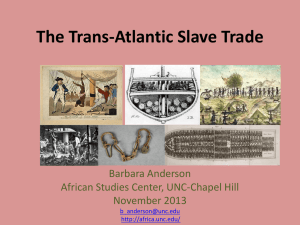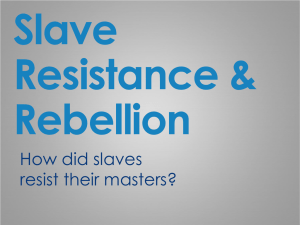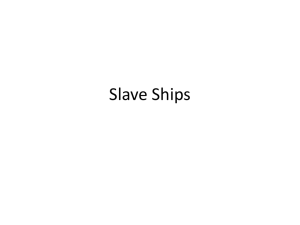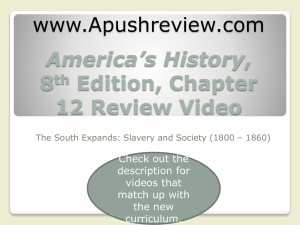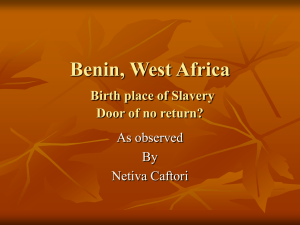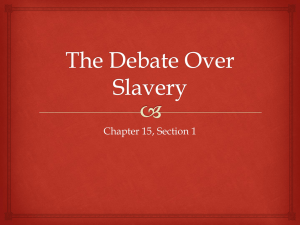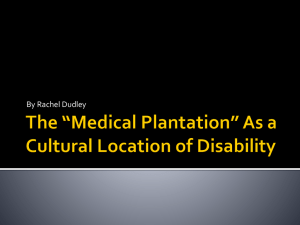Imagined Communities
advertisement
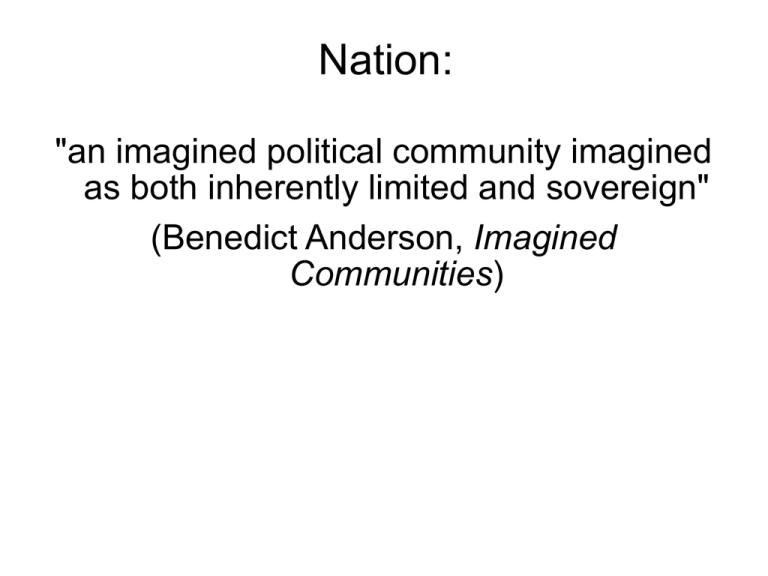
Nation: "an imagined political community imagined as both inherently limited and sovereign" (Benedict Anderson, Imagined Communities) From the Declaration of Independence, 1776: “We hold these truths to be self-evident, that all men are created equal, that they are endowed by their Creator with certain unalienable Rights, that among these are Life, Liberty and the pursuit of Happiness.” th 18 century: Enlightenment, but... also cradle of modern racism: 1) Enlightenment (radical attempt to define man's place in nature; preoccupation with a rational universe) 2) Christian Pietism (emphasis upon instincts, intuition, emotional life of the community) End 18th century: phrenology (reading the skull) physiognomy (reading the face) From Samuel Wells, How to Read Character: A New Illustrated Hand-book of Phrenology and Physiognomy, 1891 Eugenicists sometimes defined a race according to general physical appearance, but just as often they relied on language or region of origin. Definitions of race were sometimes accompanied by highly detailed measurements of body parts (fig.: Cross sections of Hairs, 1932) > The Bible (the curse of Ham) > Joseph Arthur de Gobineau, Essai sur l'inégalité des races humaines (18531855) RACE > RACISM RACISM > (institutional forms) Slavery, Imperialism, Colonialism numbers in this map would be different in light of more recent statistics, but the map still gives a graphic idea of the relative intensity of the Atlantic slave trade to New World areas through time From J. W. Buel, Heroes of the Dark Continent (New York, 1890 - captioned "victims of Portuguese slave hunters" (actually the slavers are Africans) (African American time-line, from the Norton Anthology of African American Lit.) 1492 Pedro Alonzo Nino, traditionally considered the first of many New World explorers of African descent, sails with Christopher Columbus 1526: First African slaves brought to what is now the United States by the Spanish 1619: 20 Africans brought to Jamestown, Virginia, on Dutch ship and sold as indentured servants 1641: Massachusetts becomes the first colony to legally recognize slavery 1645: First American slave ships sail, from Boston; triangular trade route brings African slaves to West Indies in exchange of sugar, tobacco and wine 1646: John Wham and his wife are freed, becoming first recorded free blacks in New England "Stowage of the British Slave Ship 'Brookes' under the Regulated Slave Trade, Act of 1788"; it shows each deck and crosssections of decks and "tight packing" of captives. One of the most famous images of the transatlantic slave trade. After the 1788 Regulation Act, the Brookes (also spelled Brooks) was allowed to carry 454 slaves, the approximate number shown in this illustration. However, in four earlier voyages (1781-86), she carried from 609 to 740 slaves From The Interesting Narrative of the Life of Olaudah Equiano or Gustavus Vassa, the African (1789) “The first object which saluted my eyes when I arrived on the coast, was the sea, and a slave ship, which was then riding at anchor, and waiting for its cargo. These filled me with astonishment, which was soon converted into terror, when I was carried on board. I was immediately handled, and tossed up to see if I were sound, by some of the crew; and I was now persuaded that I had gotten into a world of bad spirits, and that they were going to kill me. Their complexions, too, differing so much from ours, their long hair, and the language they spoke, (which was very different from any I had ever heard) united to confirm me in this belief. Indeed, such were the horrors of my views and fears at the moment, that, if ten thousand worlds had been my own, I would have freely parted with them all to have exchanged my condition with that of the meanest slave in my own country. When I looked round the ship too, and saw a large furnace of copper boiling, and a multitude of black people of every description chained together, every one of their countenances expressing dejection and sorrow, I no longer doubted of my fate; and, quite overpowered with horror and anguish, I fell motionless on the deck and fainted.” Strangely enough “the soil of slavery” had turned out to be a fertile ground for the creation of a new literature Black slaves in England and the U.S. created a genre of literature (the ex-slave narrative) that testified against their captors and bore witness to the urge to be free and literate: - European dream of reason + American dream of civic liberty 1787: Constitution ratified, classifying one slave as three-fifths of one person for congressional apportionment – Congress passes Northwest Ordinance, banning slavery in Northwest Territories and all land north of the Ohio river From the Slave Heritage Resource Center. 1857 map. (The Dark green states are the free states. The light green are the free "Territories", which were not yet states. The Red States were Slave Importing States, and the Pink States Were Slave States that Exported Slaves.) • • • • • • Briton Hammon (first half 1700 - ?) Jupiter Hammon (1711 - 1806) Lucy Terry (?1730 – 1821) Phyllis Wheatley (?1753 - 1784) John Marrant (1755 - 1791) Olaudah Equiano (1745 – 1797) • “the slave found himself without a system of written language...he first had to seize the word. His being had to erupt from nothingness” (H. Baker Jr.)



